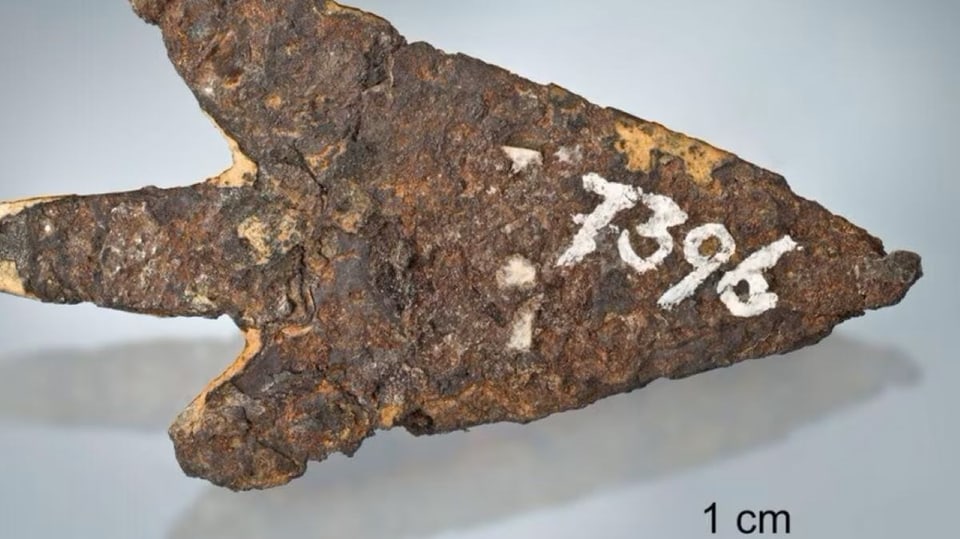Contents
Mystery of an iron arrowhead from the Bronze Age solved: The material was provided by a meteorite that crashed in Estonia.
The iron arrowhead found in Mörigen on the southern shore of Lake Biel is almost four centimeters long and weighs only three grams.
The object, discovered as early as the 19th century, dates from the end of the Bronze Age (3300 BC – 1200 BC), when iron was only known in southern Europe. The tip was recently re-analyzed on behalf of the Natural History Museum in Bern.
Beda Hofmann, project manager and meteorite expert at the museum, has been studying the meteorite fall from the Twannberg, north of Lake Biel, about 160,000 years ago for several years.
It is the largest meteorite find in Switzerland to date. He searched archaeological collections for objects that could have been made from material from the Twannberg meteorite before the Iron Age (1200 BC – 550 BC).
The trail to «Kaalijarv»
However, a fall of a large iron meteorite with a suitable chemical composition had occurred in Estonia during the Bronze Age – with “Kaalijarv” around 1500 BC. Hence the assumption that the arrowhead found in Mörigen could have been made from a fragment of the «Kaalijarv».
It must have come from a really big meteorite.
The analyzes have now also shown that the meteorite must have been large – with a mass of at least two tons. According to Hofmann, this means that a chance find of any small piece from somewhere can be ruled out: “It must come from a really big meteorite.”
The possible route to Lake Biel.
The excavated pile dwelling settlement of Mörigen on the southern shore of Lake Biel is dated to 800 to 900 BC. When the arrowhead was made, iron itself was only known in southern Europe. However, there was already long-distance trade in Europe during the Bronze Age.
For example, tin was imported to southern England for bronze casting. Or amber from the Baltic region was traded as far as North Africa. “So it would certainly not have been a problem to transport small amounts of meteoric iron to Lake Biel,” states Hofmann.
Legend:
The iron arrowhead probably reached Lake Biel from southern Europe via a trade route as early as the Bronze Age.
ZVG
Such objects made of meteoric material are very rare, emphasizes Hofmann. Only between 50 and 60 such finds are known throughout Eurasia and North Africa.
Many of these come from the tomb of the ancient Egyptian king Tutankhamun (ca. 1332 to 1323 BC). This indicates that meteoritic iron was valued very highly at the time.
From February 2024, the arrowhead from Lake Biel will be on display in the Natural History Museum in Bern in the special exhibition “And then came bronze”.
